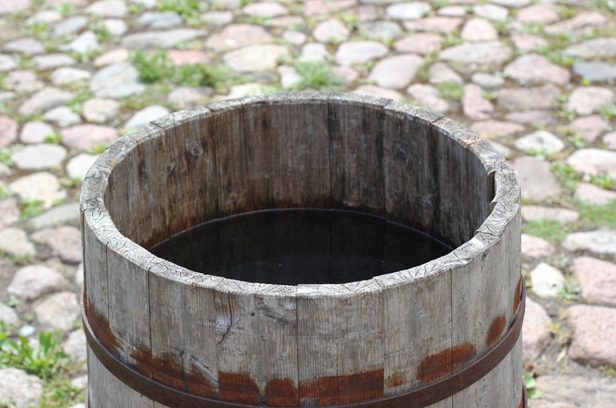
Storing water in a holding tank lets you keep it where you need it. Water storage tanks let you access water where you need it, whether you’re feeding it into a swine trough, watering a vegetable patch far away from your home’s outdoor spigot or storing it at a remote cabin.
Winter can cause problems though. In many climates, water inside tanks can freeze during cold weather months. You can’t move a 500-gallon or even a 50-gallon tank inside the house, but you can use these tips and products to manage temperature.

- Store water in larger tanks to let the water volume help keep it from freezing. It takes longer to for a large volume of water to freeze than a small one.
- Add new water to the tank regularly. The new, warmer water further delays freezing by helping to warm what is already there.
- Use round tanks instead of rectangular or square tanks because their smaller surface area provides improved insulation while it allows less heat loss.
- Choose sloping tank covers so rainwater runs off rather than collecting as it does on a flat cover. When water collects on a flat roof it can freeze in winter weather. The ice formation on the tank chills the water, but a sloped cover keeps it warmer since no ice forms on it.
- Properly insulate the water storage tank. Cover the tank’s sides and top with insulation or an insulated tank cover. Don’t insulate the bottom because warm air flow below can increase the tank’s temperature and help it avoid freezing.
- Install a water heater that helps keep the temperature above freezing. You can use a small electric heater that immerses in the water, such as a rod or pocket pack model. In environments needing additional heat, you can install a heat system in the water tank’s walls.
- Check for leaks in the connecting pipes. Leaks increase heat loss. A pipe leak can quickly freeze water in the pipe. Call a plumber and get the leak fixed by replacing the pipe.
- Create motion. Moving water takes longer to freeze than standing water. Simply pouring water from the tank a few times per day can create motion to help stave off freezing. If you can’t do this, purchase a gadget that automatically “stirs” or moves the water around.
- Tuck it in with a blanket. You probably pile on the blankets on your bed during winter. Use a drum blanket heater to warm the water tank and its contents in weather temperatures as low as -20°F (-29°C). You can find them for holding tanks for 15, 30 and 55 gallons.
- Plan and execute your warming plans early. Don’t wait until freezing weather threatens to purchase and install these preventative measures. Choose late summer or early fall for preparation. This gives you time to perfect your setup and test its performance while temperature remain above or just above freezing.
You’ll find it much simpler to prevent water in a storage tank from freezing than to try to thaw out a tank full of frozen water. You’ll also avoid the potential of the tank splitting if the water inside freezes. Water expands when it freezes which can ruin your expensive tank. A little care and maintenance ensures you’ll have available water where and when you need it throughout the year.



